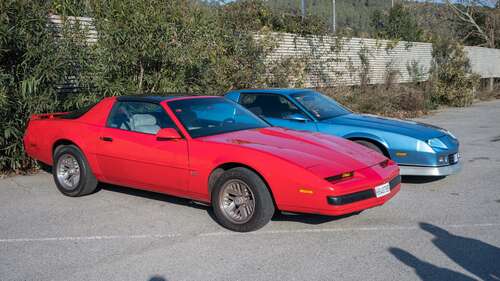
While the Camaro could be resurrected as a muscle EV like the Ford Mustang Mach-E, which SlashGear reviewed on its release in 2021, the Firebird will stay in the scrapyard with its Pontiac siblings for now. The hope for new life isn’t the only difference between the Camaro and Firebird, though.
At the time they were introduced, the Camaro and Firebird were aimed at different sectors of the car market. Chevy targeted the Camaro at people who had been buying Mustangs and other more affordable models and gave it a sticker price of a little over $2,500. At about $2,800, the Firebird was aimed a little further up the ladder at the likes of the Plymouth Barracuda and Mercury Cougar. Its interior was more refined and well-appointed than the Camaro’s, but these differences were subtle.
The two models used the same glass, floors, and rocker panels and were both manufactured at GM’s Norwood, Ohio factory, which was upgraded in 1981 in time to produce the second-generation F-bodies. Each model was also spun off into high-performance variants. Chevy made the Camaro SS and Z/28 (later known as Z28 with no slash), which was an option package through 1974 and its own model beginning in 1977. Pontiac had the iconic Trans Am. The base engine in the ’67 Camaro was a 230 cubic inch I6, and upgrade options during the first generation included the beloved small-block 350 cubic inch V8 and its 396-inch cousin.

